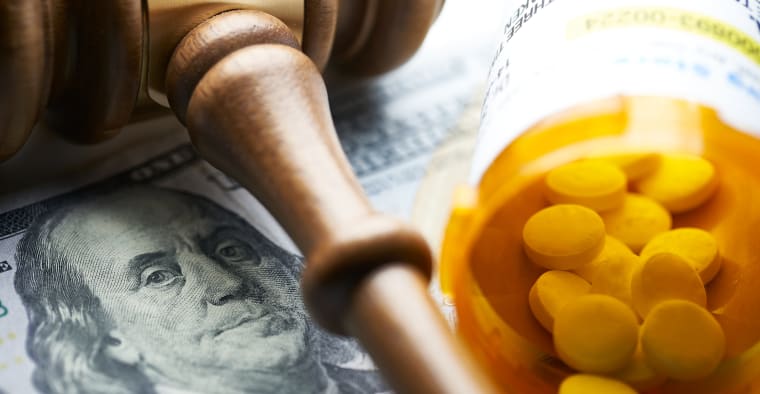New Yorkers May Soon Pay Lower Prescription Drug Costs. Here’s How to Save Anywhere

Potentially good news for New Yorkers: On Jan. 30, the state Senate passed a package of bills designed to help lower the cost of prescription drugs. (By some measures, New York has the third-highest prescription drug expenditures, behind only Texas and California.)
The package includes seven bills, including one that would allow the Empire State to manufacture its own generic versions of high-cost prescription drugs or those in limited supply (S4786A). New York would be the second state to enact such a measure — after California, which signed a similar piece of legislation in 2020.
What else is in the New York drug price package of bills?
Another part of the package, S6738A, is aimed at increasing price transparency starting with pharmacy administrators, switch companies and rebate aggregators, while S604 would create a wholesale importation program specifically, the bill states, "for the purpose of generating substantial savings for consumers."
S504A would eliminate cost-sharing — i.e, copays — for insulin. Insulin producers Eli Lilly and Sanofi-Aventis already agreed in 2023 to cap the monthly cost of insulin for uninsured New Yorkers at $35 per month — still, this bill could create major savings for New Yorkers battling diabetes.
Another bill in the package creates new rules around the establishment of step therapy programs. With this approach (described by Medicare as "a type of prior authorization"), patients who are prescribed a high-cost medication would first need to take a less expensive alternative before "stepping up," as required by their insurers. (However, in some cases the less expensive option would need to prove unsuccessful before the insurer would allow the higher-cost one — as such, step therapy programs are also known as "fail first" procedures.)
Further legislation requires manufacturers to notify the attorney general of arrangements that could delay the production of generic medications and allows those with Medicare Part D eligibility to qualify for the Elderly Pharmacy Insurance Care (EPIC) program, as well.
All told, the package promises to ease the burden of prescription medication costs for New Yorkers of many demographics and financial standings. However, each legislation must also be passed by the New York State Assembly before crossing Gov. Kathy Hochul’s desk for a signature before it becomes official state law.
Saving money on prescription costs — no matter where you live
While January’s package of bills may put lower prices on the horizon for New Yorkers, prescription drug costs remain top of mind for patients across the United States. Between January 2022 and January 2023 alone, the average price increase for prescription drugs was more than 15%, an equivalent of about $590 per drug.
According to ValuePenguin, 31% of Americans who pay for prescription drugs say the cost puts a strain on their finances.
Fortunately, there are workable ways to save money on prescription drugs, regardless of where you live — though of course some medical costs, like average insurance premiums, do vary significantly by state.
For starters, find out if you’re eligible for Medicare. While the most common way to qualify is to reach age 65, you may also qualify if you have end-stage renal disease or ALS. Medicare Part D is its prescription drug coverage program, and Medicare drug price negotiations — which aim to push down the costs of certain common medications — are currently underway.
As always, opting for generics when they’re available can also be a tremendous help: Generic versions of drugs often cost as much as 80% to 85% less than their brand-name counterparts.
Finally, consider patronizing online pharmacies — they cut costs by negotiating directly with drugmakers, and then pass those savings onto their customers. And if you’re loyal to a brick-and-mortar pharmacy, consider asking if they offer a discount program. Some major pharmacies, like Walgreens and Walmart, offer savings options for thousands of generic drugs.
Editorial Note: The content of this article is based on the author’s opinions and recommendations alone. It has not been previewed, commissioned or otherwise endorsed by any of our network partners.
